Diversify textures to generate information, express temper and build atmosphere in a portray.
by Andy Evansen
When people today consider of the word “texture” in the context of painting, usually they envision one thing rough. Texture doesn’t have to suggest bumps and ridges, nevertheless. Texture can also come to feel easy, moist, comfortable, and so on. Earning clouds search smooth, roadways appear damp and trees search alive has a good deal to do with timing, the way you deal with your paint software and the kind of brush and paper you use.
Making use of Washes
There are a few simple sorts of washes, or phases, utilized in watercolor: wet-into-moist, soaked-on-dry and dry-on- dry (or drybrush). Most watercolor paintings integrate all a few kinds of washes. Wet-into-soaked is ordinarily used for the initial mild clean, when you dampen the total paper and paint the sky and area colours of the landscape. It is all extremely free and starts to set the phase for the rest of the painting.
Wet-on-dry is made use of when you very first start out defining points on the ground airplane. In my knowledge, this is the most difficult component of a watercolor due to the fact it’s straightforward to aim on personal objects and shed sight of the bigger composition. In buy to get huge, sturdy descriptive designs, the puddles of coloration and brush ought to be soaked so you can shed edges in between shapes of related price as you operate to join them. The paper, having said that, must be fairly dry to make certain the silhouettes of people designs are precise. I ordinarily change in between a handful of different brushes at this phase of the painting.
Dry-on-dry is applied when it comes time to paint the darks of things, these types of as figures and objects. The paper is dry, and you ought to be employing relatively undiluted paint. I like to drybrush most of the facts, if possible, to keep them from getting to be far too overpowering, specially windows. Drybrushing some of your figures will help them to look blurry, as if they are going.
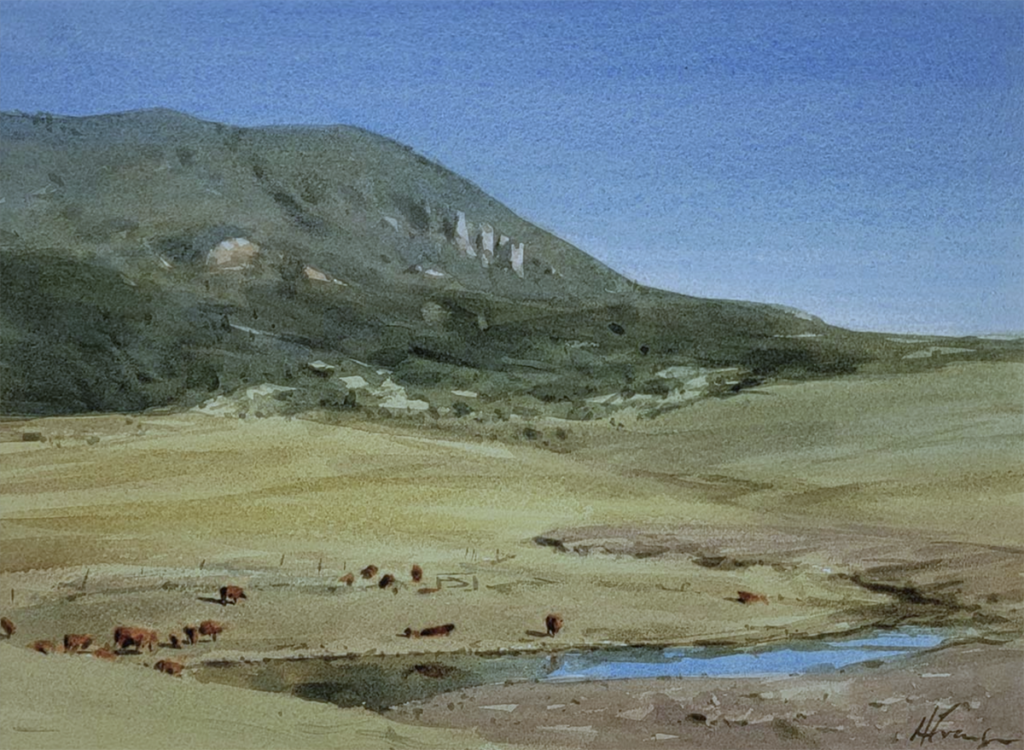
Fashion and Compound
My painting design could be described as loose realism. I test to realize a perception of precision without the need of using much too substantially detail. Fundamentally, I want to stop portray just before the perform gets to be a rendering. Leaving significantly to the viewers’ creativity allows engage them in your painting and also lends an impressionistic emotion to the operate. When you’re leaving out a lot of element, nonetheless, it becomes that significantly more significant that the shapes you do include things like are convincing.
To that end, I operate on paper that is damp for a great deal of the painting. It’s crucial that I generate the effect that the “animated” elements of my watercolors (figures, animals, trees, clouds and so on.) seem as if they are alive and shifting. At the time I have gotten my original light-weight wash on the paper, I’ll go back again in with a modest brush and thicker paint and fall in some darker values and hues the place these objects will be. I’m not essentially describing them just nevertheless, but when I arrive back later to determine items immediately after the paper has dried, it does assist if there is some blurred color from beforehand utilized washes to assistance make the impact of motion. Colorado Vista (previously mentioned) is a great case in point of this, with the cattle getting marginally blurred edges and darker, far more described shadow sides.
Environment and Facts
If I’m portray fog, snow or rain, I’ll do the job on damp paper for the bulk of the painting, blurring shapes to give the illusion of a wet ambiance. Dust and smoke are also enjoyable troubles. You can generally arrive back in and make these results with gouache, but I like to realize the effect by doing work into that light region moist- into-moist. In my painting Crop Dust (underneath), the sky and dust ended up painted in the first wash, and though that was nonetheless drying, I commenced to paint the distant trees and industry, permitting them steadily disappear as they bought closer to the tractor. Immediately after the paint dried, I arrived back and included the darker, defined tractor, which also can help the illusion. The trees driving the dust are delicate and blurred. The midground trees, which I painted later, are much more described and textural.
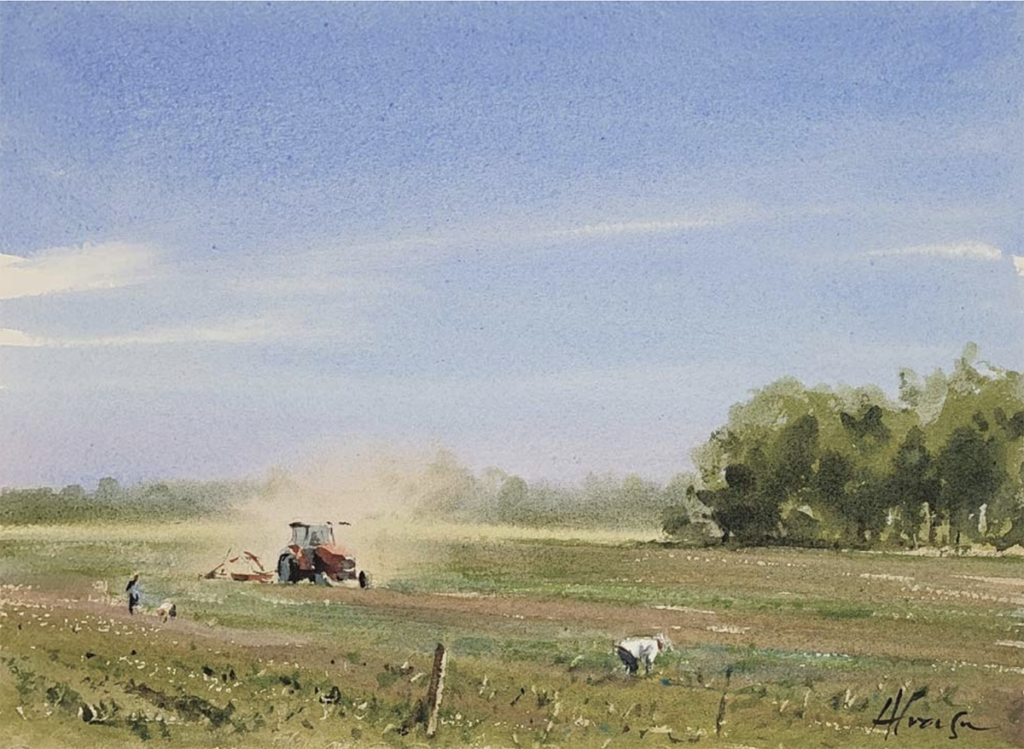
Drybrushing can be practical for extra than just smaller facts, of training course. Developing the illusion of grime roads, foreground grasses, glare on drinking water and leafless winter season trees are all the final result of a rapid software of thicker paint with a light-weight touch, having gain of the paper’s texture to crack up the brushstrokes. In my portray Complicated (under remaining), the vivid glare was produced utilizing big brushstrokes, lifting the brush as I obtained near to the location I wanted to go away as white paper. In Farmhouse Trees (underneath, correct), you can see the use of speedy strokes to show both equally foreground grass and distant trees as well as swiftly suggested windows. You can also see—in the linked shapes of the trees and on the facet of the house—how I was ready to build gentle, shed edges by performing soaked-on-dry.
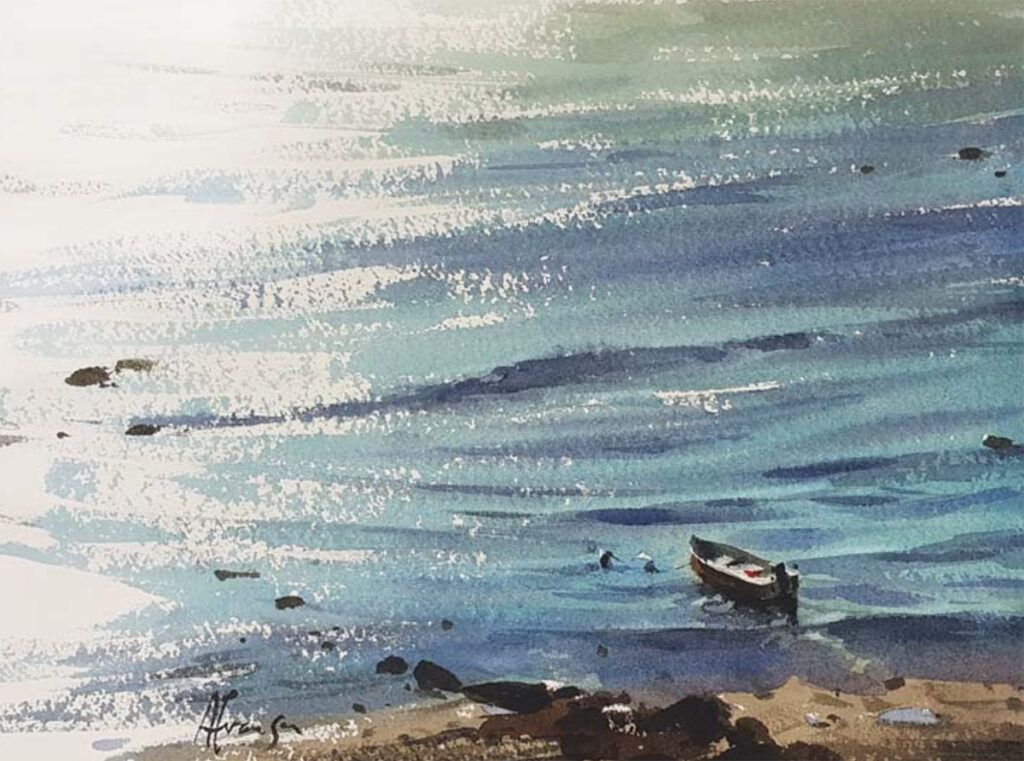
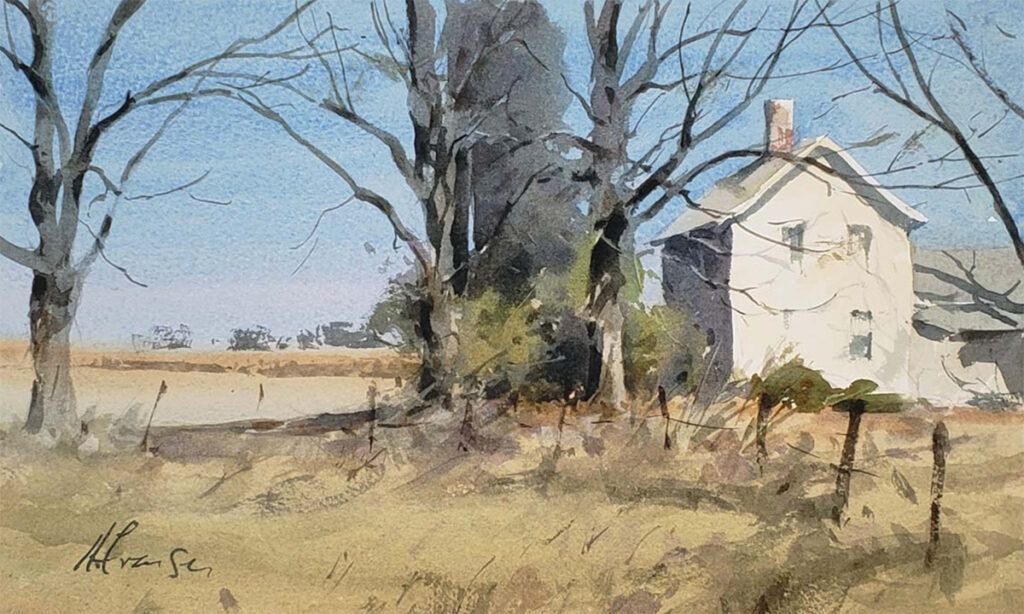
A single additional “trick” I like to utilize for gentle blades of grass or brilliant branches of trees is to scrape them out with my fingernail. I paint the bigger form of darker grass or trees and then, suitable ahead of it is dry, I scratch out some person blades or twigs, as I did in various areas of Frog Hunters (down below).
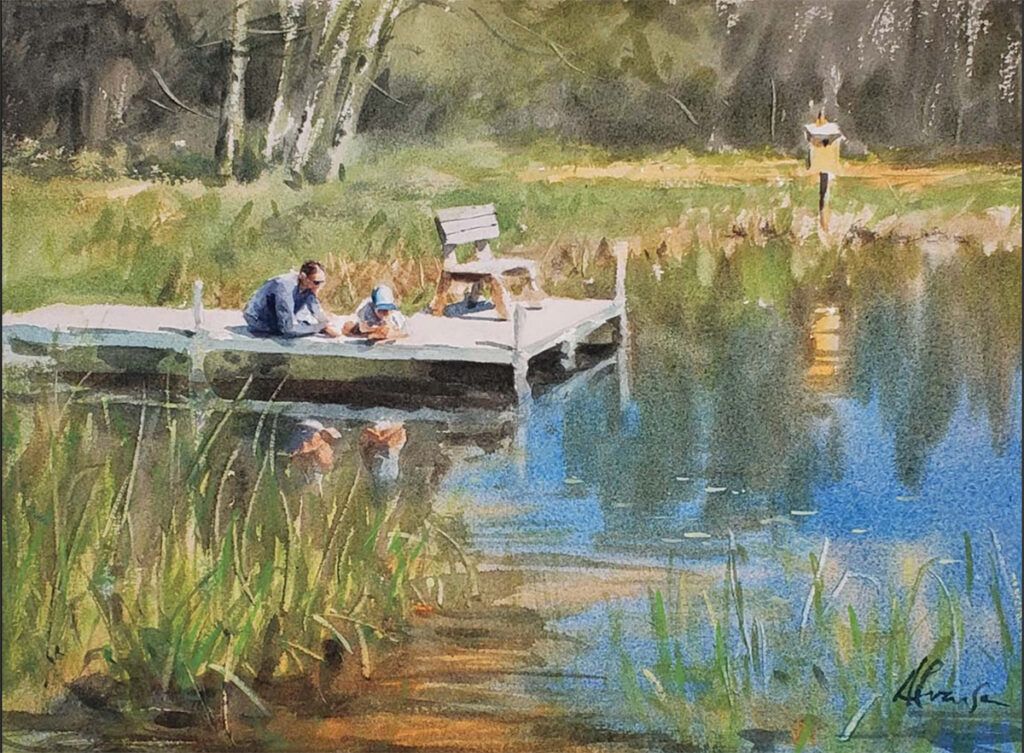
Ways to Accomplishment
Our problem as watercolor artists is to make a convincing, 3 dimensional world of sort and length on a millimeter-thick piece of paper. Finding familiar—and comfortable—with all the different phases of soaked and dry washes to generate visible texture is crucial to attaining a thriving painting.
(This report in the beginning appeared in the Winter season 2022 situation of Watercolor Artist Magazine, which also contains a demo. Print and electronic formats are accessible here.)










More Stories
All About Watercolor Granulation by Sarah Becktel
Interview with Lisa-Marie Price | Rise Art
3 Tips to Use TRUST to Grow Your Art — Caryl Fine Art